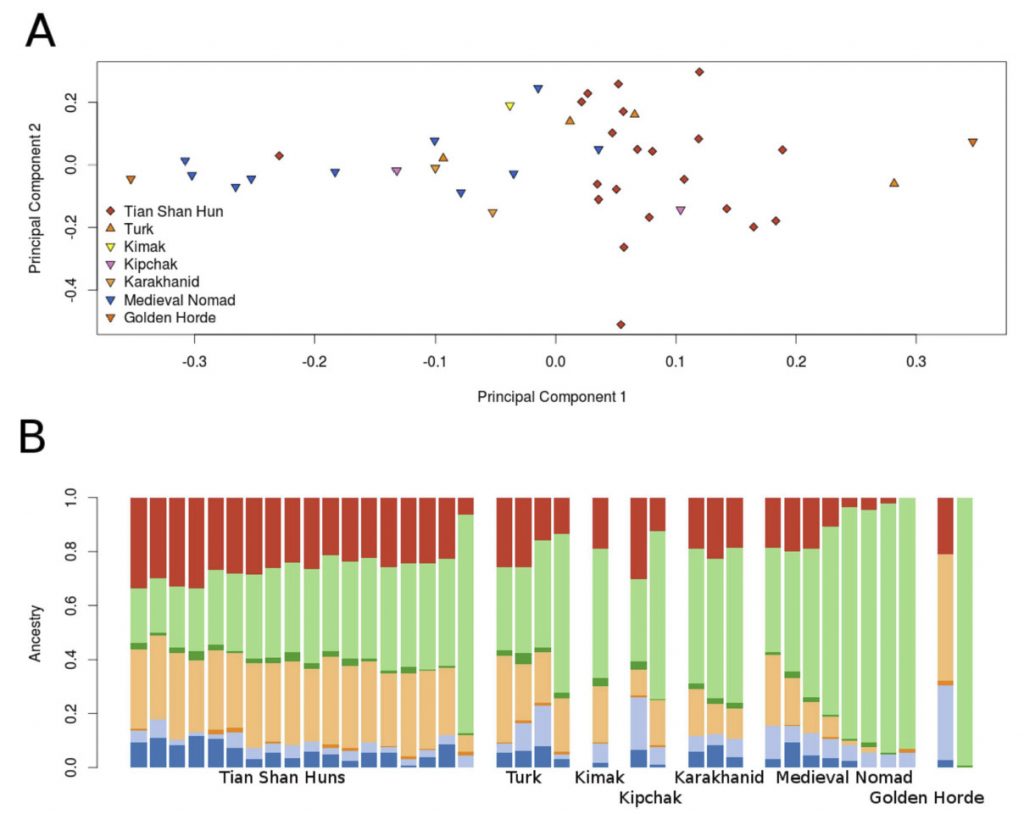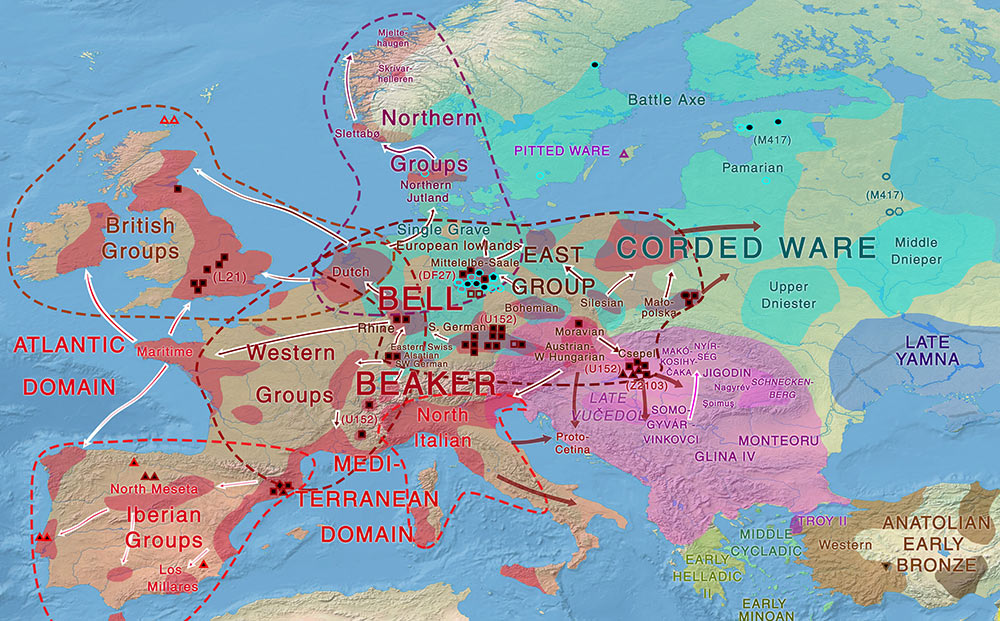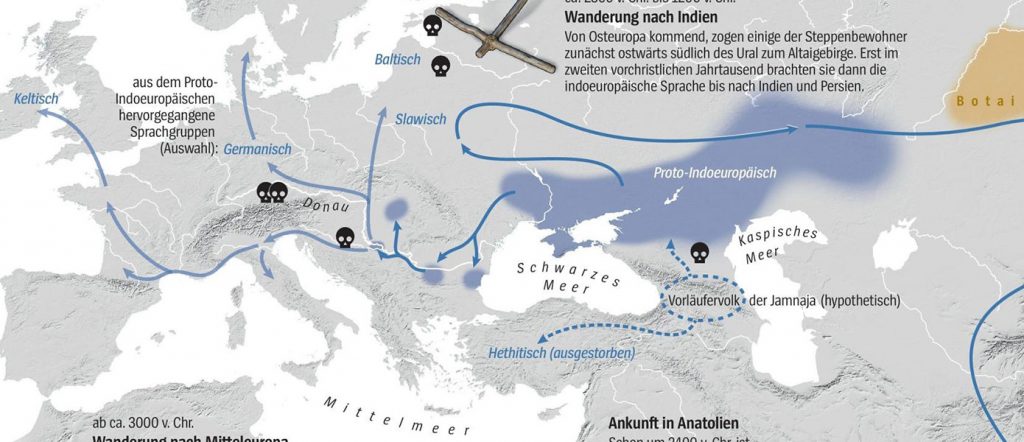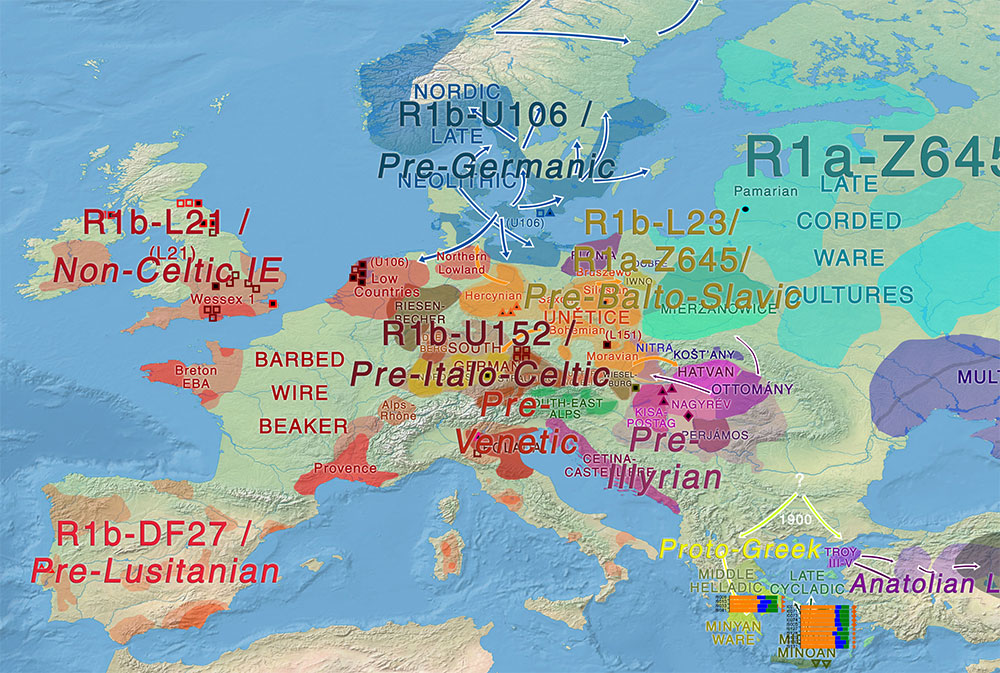Recent article on The Conversation, The Roman dead: new techniques are revealing just how diverse Roman Britain was, about the paper (behind paywall) A Novel Investigation into Migrant and Local Health-Statuses in the Past: A Case Study from Roman Britain, by Redfern et al. Bioarchaeology International (2018), among others.
Interesting excerpts about Roman London:
We have discovered, for example, that one middle-aged woman from the southern Mediterranean has black African ancestry. She was buried in Southwark with pottery from Kent and a fourth century local coin – her burial expresses British connections, reflecting how people’s communities and lives can be remade by migration. The people burying her may have decided to reflect her life in the city by choosing local objects, but we can’t dismiss the possibility that she may have come to London as a slave.
The evidence for Roman Britain having a diverse population only continues to grow. Bioarchaeology offers a unique and independent perspective, one based upon the people themselves. It allows us to understand more about their life stories than ever before, but requires us to be increasingly nuanced in our understanding, recognising and respecting these people’s complexities.
We already have a more or less clear idea about how little the Roman conquest may have shaped the genetic map of Europe, Africa, or the Middle East, in contrast to other previous or later migrations or conquests.
Also, on the Turkic expansion, the recent paper of Damgaard et al. (Nature 2018) stated:
In the sixth century AD, the Hunnic Empire had been broken up and dispersed as the Turkic Khaganate assumed the military and political domination of the steppes22,23. Khaganates were steppe nomad political organizations that varied in size and became dominant during this period; they can be contrasted to the previous stateless organizations of the Iron Age24. The Turkic Khaganate was eventually replaced by a number of short-lived steppe cultures25 (…).
We find evidence that elite soldiers associated with the Turkic Khaganate are genetically closer to East Asians than are the preceding Huns of the Tian Shan mountains (Supplementary Information section 3.7). We also find that one Turkic Khaganate-period nomad was a genetic outlier with pronounced European ancestries, indicating the presence of ongoing contact with Europe (…).

These results suggest that Turkic cultural customs were imposed by an East Asian minority elite onto central steppe nomad populations, resulting in a small detectable increase in East Asian ancestry. However, we also find that steppe nomad ancestry in this period was extremely heterogeneous, with several individuals being genetically distributed at the extremes of the first principal component (Fig. 2) separating Eastern and Western descent. On the basis of this notable heterogeneity, we suggest that during the Medieval period steppe populations were exposed to gradual admixture from the east, while interacting with incoming West Eurasians. The strong variation is a direct window into ongoing admixture processes and the multi-ethnic cultural organization of this period.
We already knew that the expansion of the La Tène culture, associated with the expansion of Celtic languages throughout Europe, was probably not accompanied by massive migrations (from the IEDM, 3rd ed.):
The Mainz research project of bio-archaeometric identification of mobility has not proven to date a mass migration of Celtic peoples in central Europe ca. 4th-3rd centuries BC, i.e. precisely in a period where textual evidence informs of large migratory movements (Scheeres 2014). La Tène material culture points to far-reaching inter-regional contacts and cultural transfers (Burmeister 2016).
Also, from the latest paper on Y-chromosome bottleneck:
[The hypothesis of patrilineal kin group competition] has an added benefit in that it could explain the temporal placement of the bottleneck if competition between patrilineal kin groups was the main form of intergroup competition for a limited episode of time after the Neolithic transition. Anthropologists have repeatedly noted that the political salience of unilineal descent groups is greatest in societies of ‘intermediate social scale’ (Korotayev47 and its citations on p. 2), which tend to be post-Neolithic small-scale societies that are acephalous, i.e. without hierarchical institutions48. Corporate kin groups tend to be absent altogether among mobile hunter gatherers with few defensible resource sites or little property (Kelly49 pp. 64–73), or in societies utilizing relatively unoccupied and under-exploited resource landscapes (Earle and Johnson50 pp. 157–171). Once they emerge, complex societies, such as chiefdoms and states, tend to supervene the patrilineal kin group as the unit of intergroup competition, and while they may not eradicate them altogether as sub-polity-level social identities, warfare between such kin groups is suppressed very effectively51,52.These factors restrict the social phenomena responsible for the bottleneck to the period after the initial Neolithic but before the emergence of complex societies, which would place the bottleneck-generating mechanisms in the right period of time for each region of the Old World.

However, I recently read in a forum for linguists that the expansion of East Bell Beakers overwhelmingly of R1b-L21 subclades in the British Isles “poses a problem”, in that it should be identified with a Celtic expansion earlier than traditionally assumed…
That interpretation would be in line with the simplistic maps we are seeing right now for Bell Beakers (see below for the Copenhagen group).
If anything, the results of Bell Beaker expansions (taken alone) would seem to support a model similar to Cunliffe & Koch‘s hypotheses of a rather early Celtic expansion into Great Britain and Iberia from the Atlantic.

But it doesn’t. Mallory already explained why in Cunliffe & Koch’s series Celtic from the West: the Bell Beaker expansion is too early for that; even for Italo-Celtic. It should correspond to North-West Indo-European speakers.
Not every population movement that is genetically very significant needs to be significant for the languages attested much later in the region.
This should be obvious to everyone with the many examples we already have. One of the least controversial now would probably be the expansion of R1b-DF27, widespread in Iberia probably at roughly the same time as R1b-L21 was in Great Britain, and still pre-Roman Iberians showed a mix of non-Indo-European languages, non-Celtic languages (at least Galaico-Lusitanian), and also some (certain) Celtic languages. And modern Iberians speak Romance languages, without much genetic impact from the Romans, either…
It is well-established in Academia that the expansion of La Tène is culturally associated with the spread of Celtic languages in Europe, including the British Isles and Iberia. While modern maps of U152 distribution may correspond to the migration of early Celts (or Italo-Celtic speakers) with Urnfield/Hallstatt, the great Celtic expansion across Europe need not show a genetic influence greater than or even equal to that of previous prehistoric migrations.

You can see in these de novo models the same kind of invented theoretical ‘problem’ (as Iosif Lazaridis puts it) that we have seen with the Corded Ware showing steppe ancestry, with Old Hittite samples not showing EHG ancestry, or with CHG ancestry appearing north of the Caucasus but no EHG to the south.
However you may want to explain all these errors in scientific terms (selection bias, under-coverage, over-coverage, faulty statistical methods, etc.), these interpretations were simply fruit of the lack of knowledge of the anthropological disciplines at play.
Let’s hope the future paper on Celtic expansion takes this into consideration.
Related:
- Steppe and Caucasus Eneolithic: the new keystones of the EHG-CHG-ANE ancestry in steppe groups
- Immigration and transhumance in the Early Bronze Age Carpathian Basin
- The Caucasus a genetic and cultural barrier; Yamna dominated by R1b-M269; Yamna settlers in Hungary cluster with Yamna
- Olalde et al. and Mathieson et al. (Nature 2018): R1b-L23 dominates Bell Beaker and Yamna, R1a-M417 resurges in East-Central Europe during the Bronze Age
- Consequences of Damgaard et al. 2018 (III): Proto-Finno-Ugric & Proto-Indo-Iranian in the North Caspian region
- North Pontic steppe Eneolithic cultures, and an alternative Indo-Slavonic model
- The concept of “Outlier” in Human Ancestry (III): Late Neolithic samples from the Baltic region and origins of the Corded Ware culture